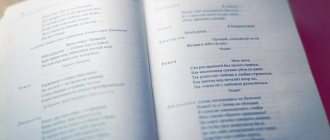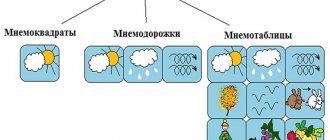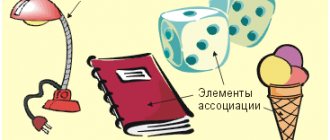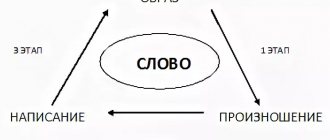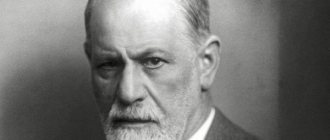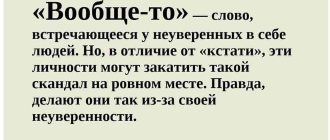The method of connected associations is a powerful tool for memorizing to-do lists, things, etc. Mastering this method gives a very big starting breakthrough in the development of memory.
To remember a series of words using the method of coherent associations, you will need some already memorized series of words. It will become the base. You can come up with your own series or take this one:
House, tomato, soap, notebook, sun, mouse, tangerine, box, hole, fire.
You must connect each word of the learned series with a word of the new series (the first with the first, the second with the second, and so on). This method allows you to save your time and effort, since you do not have to memorize the series again.
You can connect words with each other like this, for example: tree and sun. The sun is shining, and the tree is reaching towards the sun. Or sour cream and cat. The cat licks the sour cream on the table.
Since you know the basic series of words by heart very well, it will not be at all difficult for you to reproduce new words in the correct sequence, using associations.
For example, given a series of words:
Grass, cucumber, pineapple, black man, window, envelope, chair, bottle, apartment, door.
Now, using the learned series of words, in our case it will be “house, tomato, soap, notebook, sun, mouse, tangerine, box, hole, fire,” let’s depict the method in action.
Let's connect the word grass with the corresponding word - house. Emerald grass grows in front of the house. Next are cucumber and tomato. The recipe for summer salad is simple: cucumber + tomato. We can use a bunch of soap with the scent of pineapple, or you can: pineapple, before serving, was washed with soap. The black man makes notes in a notebook. The sun is blinding through the window. The mouse chewed through the envelope. The mandarin crashed into a chair. Box filled with bottles. Nora is a mouse's apartment. The door is all on fire.
Now try playing the new list in order. How many words did you name correctly? This exercise is excellent training for memory and brain development in general.
This method can be used to remember ordinary things in everyday life. Can be used to remember a list of products that you should buy in stores. If the list is very large, then memorizing in this way will be very useful for developing your memory and association.
Exercise to memorize a number of words
Memorize a series of 15 words using the method of coherent associations:
Camel, ceiling, compote, book, rocket, pepper, needle, pillow, leaf, September, ditch, river, air, rope, loaf.
Also try to play not only in forward order, but also in reverse order. Try to make as few mistakes as possible. If you have them, try to come up with stronger connections between the words.
Another possible reason for your mistakes could be a poorly learned series of words that you rely on to remember the new series.
Take the time to learn a long series of words that will become your base. It must be learned in such a way that you can tell it without hesitation or any difficulties. If you are asked something from the multiplication table, you will answer immediately (if, of course, you know it by heart). Therefore, learn the series so that later, without straining, you can remember. Let it be a list of 20 words so that you always have a reserve. For such a list, you can use words that are convenient for you and memorize.
The ability to correctly and accurately form associative connections between words is the key to quick memorization and high-quality memory development.
Memorizing a large number of unrelated words using the associated association method is a reliable way to develop and maintain your memory in good shape. The main thing is to practice regularly.
Try to visually represent your associative connection as best as possible in the form of a story. Don’t rush to memorize, spend as much time memorizing as you need. It may not work out well at first, but with regular training you will memorize associative series better and faster. Also, do not forget that you need to train for 20-30 minutes and take a break for 20-30 minutes.
During a break, you cannot read, watch TV, surf the Internet, etc. The brain must rest so that new neural connections are formed and the skill is better consolidated.
Development of intelligence and thinking
Photo by Wolfgang Hasselmann on Unsplash
The associative series is often used in intelligence tests. Some tasks involve working with associations. By completing test tasks, you can learn about the development of logic and erudition in yourself. The more trained your thinking is, the faster you find associative connections between objects and phenomena.
Children are taught this at preschool age. These are simple association games where you need to combine 2-3 objects based on a common characteristic. For example, you can add sea and sand to the sun. Or shoelaces. These are the simplest and most obvious associative series.
Associations are what a person acquires with experience, what he learns. Each child absorbs the basic ways to carry out associative series. By the way, an association test is used to diagnose schizophrenia. Patients with schizophrenia do not detect associative connections between objects, or they see associations that are far from obvious and indirect.
Solving various intellectual problems using associations allows you to train your thinking. You can easily find collections of problems or online resources for training associative thinking.
Association method
Today's task
Keep another row of words to memorize:
Mountain, stone, fireplace, snow, wind, carpet, firecracker, star, earth, cucumber, keyboard, wheel, anchor, sea, bridge, camera, road, plane, rocket, moon, sun, stars.
A good start! I'm glad that we have already completed the first lesson today; the main thing is to set a goal and go towards it. Walk evenly, steadily, step by step, without jerks or long stops. For comparison, a Chukchi can kill a deer with his bare hands: he simply follows it at the same pace until the deer is exhausted and can no longer run.
Lesson taken from the course: Super memory in 30 days
Associative series in psychology
The associative series method is used in different psychological schools and directions: NLP, Gestalt psychology, art therapy, psychoanalysis. As you can see, not a single psychologist can do without associations.
A direction such as NLP (neuro-linguistic programming) uses the method of associations to consolidate some important skills or processes. For example, there is the “anchor” technique. It is used to commit something important to memory.
For example, you want to earn a certain amount for a new car. This goal energizes you and doesn’t let you go. In order to help the brain “tune in” to the desired goal, the anchoring method includes associations. You need to imagine that you have already achieved your goal and are driving the car of your dreams. Imagine vividly and in detail what you feel at this moment, do you think? What is happening around you: what does a new car interior smell like, what music is playing, or maybe you are driving past the embankment? What smells and sounds surround you? What pictures, images do you imagine when you think about your dream?
Having described in detail your dream in real embodiment, highlight the main accents in this picture. And come up with “anchors” for them. Perhaps these will be some symbols that you draw on a small piece of paper and put everywhere: in your wallet, in your desk, even on the refrigerator shelf. It is important that your gaze unexpectedly stumbles upon an anchor associated with your dream. Thus, the brain will constantly receive a signal associated with the goal. This will allow even unconscious mechanisms to pave the way for the dream.
You can use drawn symbols, small objects, anything as an anchor, the main thing is that it should remind you of your goal.
Super memory in 30 days
Remember the necessary information quickly and for a long time. Do light and simple exercises to train your memory little by little throughout the day. Train your memory with dozens of exercises that will be useful in everyday life.
Sign up for a courseRead more
How to improve memory and develop attention
Free practical lesson from advance.
Sign up for freeRead more
How it works?
In Gestalt psychology, associations are used in working with problematic human situations. For example, unpleasant symptoms in the body. When a person suffers, for example, from frequent headaches or stomach cramps. It is clear that the body is “signaling” something, but the meaning of the symptom is not obvious.
Working through an associative series will help with this. With the help of special questions you can understand any symptom of your body:
- Describe the symptom in detail, how do you feel?
- What are these sensations like?
Giphy
- Imagine the symptom as an image, what is it? Describe the shape, color, size, structure, temperature of this image/object/phenomenon. Examine the image in great detail, let it reveal itself.
- Imagine that this image is alive. What is he telling you? Listen, take a closer look at him. Why did he come into your body, what message did he prepare for you?
It is very important when working with an image to allow associations to flow freely, without relying on logic. Then you will be able to read your own body language. Of course, there is a lot of scientific literature on psychosomatics and you can read ready-made associations. But your body language may be different. After all, each person acquires an individual, unique set of associations throughout his life. There are general associative series, but they have unique nuances.
Among popular psychologists, Liz Burbo and Louise Hay are famous in the study of bodily associations. You can read their books, you will find a lot of interesting things there.
Other development courses
Speed reading in 30 days
Increase your reading speed by 2-3 times in 30 days. From 150-200 to 300-600 words per minute or from 400 to 800-1200 words per minute. The course uses traditional exercises for developing speed reading, techniques that speed up brain function, methods for progressively increasing reading speed, exercises for memorizing what has been read, the psychology of speed reading and the questions of course participants are discussed. Suitable for children and adults reading up to 5000 words per minute.
Sign up for a courseFree lesson
Verbal counting
Learn to quickly and correctly add, subtract, multiply, divide, square numbers, and even extract roots. I will teach you how to use easy techniques to simplify arithmetic operations. Each lesson contains new techniques, clear examples and useful tasks.
Sign up for a courseRead more
Development of memory and attention in a child 5-10 years old
The purpose of the course: to develop the child’s memory and attention so that it is easier for him to study at school, so that he can remember better.
After completing the course, the child will be able to:
- 2-5 times better to remember texts, faces, numbers, words
- Learn to remember for a longer period of time
- The speed of recalling the necessary information will increase
Sign up for a courseRead more
Basic mnemonic devices:
The applied arsenal of modern mnemonics consists of a large set of unified memorization techniques. Among the main mnemonic techniques and methods are the following:
- Letter code. Formation of semantic phrases from the initial (or purposefully assigned) letters of memorized information.
- Associations. Finding vivid, unusual associations that connect to memorized information.
- Rhymes. Creating rhyming pairs of words or even short poems containing memorized material.
- Consonance. Memorizing terms or foreign words using consonant already known words or phrases.
- Roman room method. Assigning memorized objects to specific locations in a room you know well.
In this lesson, for ease of learning, all mnemonics will be divided into groups depending on the type of information that these mnemonics help to remember.
What are associations?
Association is a connection between separate representations in which one of the representations causes another.
“A dream caused by the flight of a bee around a pomegranate, a second before awakening”, Salvador Dali, 1944
Associations, like bridges, can connect newly received information with existing information. In our minds, associations replace each other in a continuous stream, arising in response to all kinds of stimuli. Associative thinking is an extremely important component of the human mind, allowing it to generalize and abstract.
With the help of associations and metaphors, connections between concepts can be established. This is useful for generating ideas. It is believed that any two concepts can be connected by a chain of an average of ten associative transitions. For example, the associative transition between the concepts “wood” and “ball” will look like this: “wood” - “forest”, “forest” - “field”, “field” - “football”, “football” - “ball”. How to connect the concepts of “sky” and “tea”: “sky” - “earth”, “earth” - “water”, “water” - “drink”, “drink” - “tea”.
Types of associations
- By contiguity, that is, by proximity, proximity in space or time, when one idea evokes another in consciousness, due to their temporal or spatial coincidence. Most often, this proximity is natural, for example: beehive - bees, bear - winter - den, winter - frost - snow... But sometimes there is no natural connection between ideas, and the association arises because a random coincidence of the perception of objects once occurred. For example, when you hear certain music, you remember the person you met who played the same music. The entire habitual train of thoughts acquired by memory is due to nothing more than an association by contiguity. The words of a poem, trigonometric formulas, historical events, the properties of material objects - all these are for us certain systems or groups of objects that are interconnected through countless repetitions in a certain sequence, each of which evokes in memory an idea of \u200b\u200bthe others.
- By similarity, by similarity, that is, similar by some characteristic: in shape, in color, in perception, in function... For example: a ball is a watermelon, a lemon is lemonade, snow is cotton wool... This feature is not always significant, which leads to quite original associations. An example is the situation described by A.P. Chekhov in a story about a man whose surname “Ovsov” was associated with a “horse” (“Horse surname”)
- By contrast, that is, the opposite in some properties. This type of association is the most complex, is relatively rare and is more typical for people with non-standard thinking. For example: good - evil, mountain - plain, mountain - gorge, sparks - snowflakes...
Stages of mastering the technique
Development is carried out in four stages:
1.
encoding – abstract data is collected;
2. combining images - a connection is established between unrelated initial components;
3. memorizing a sequence - repetition in any convenient form, decoding abstract data;
4. direction to “long-term” memory and reproduction if necessary.
This sequence helps to process any amount of input data
With the help of mnemonics, you can remember a vast amount of information and develop “super memory”. Training can begin at any age, the result depends only on the amount of time spent on mastering the technique and the efforts made.
Effective techniques
Many of them are known to us from school. Remember how you were taught to remember the colors of the rainbow? For this purpose, the Acrostic method was used. From the first letter of each word of the poem, you can remember the sequence of colors (Everyone is red, Hunter is orange, Wants, yellow, Knows, green, Where blue sits, blue Pheasant, purple).
There are many large and small poems with which you can train your memory. Everyone remembers that a bisector is a rat running around the corners and dividing the corner in half. All these are mnemonic techniques.
All this works through a system of images and associations. Connecting words with objects will help you remember long lists. It’s even easier to compose stories, and the funnier and more absurd they are, the easier you will remember phrases and sentences. Here's how to put together such different and unrelated words into a single chain: orange, piano, lion, vacuum cleaner, stick? Come up with a story about how an orange played the piano, but the lion didn’t like the game, he turned on the vacuum cleaner and threw a stick at the orange. The more crazy the story turns out, the more firmly it will stick in the memory.
Chain
You can memorize unrelated words using chains built in your mind in the form of a picture (like Wimmelbook). The orange lies on the piano, behind which sits a lion, with a vacuum cleaner in one hand and a stick in the other. Such pictures help you remember many words at once, not just 5 or 10.
Wimmelbuch - a children's book to look at
Locations or the “Roman Room” method
To master the method, you need to remember the nuances in the environment of your home. All places should be designated with some number (entrance door - 1, clothes hanger or closet - 2, umbrella holder - 3, door to the kitchen - 4, dining table - 5, etc.). Let us remember our words in order; We hang the orange on the door, we put the piano in the closet (on a hanger), we put the lion to guard the umbrellas, we put the vacuum cleaner near the kitchen door, and we put the stick on the dining table. This way you can also remember unrelated words that you heard very recently or for the first time.
Piercing
To remember a certain sequence of words, you can resort to this technique. This way you can recall a shopping list or any other list of unrelated words in your memory. If you need to purchase the following products in the store:
- vegetable oil;
- tomato paste;
- milk;
- apples;
- wet wipes;
- raisin;
- a can of corn;
- cheese.
You need to imagine a picture where a bottle of vegetable oil pierces a can of tomato paste. Here you can imagine that red juice from fresh tomatoes is leaking from a jar, and that the oil in the bottle is colored as it mixes with the paste. The brighter the picture, the easier it will be to recall these moments in your memory. Next on the list are milk, apples, wet wipes and raisins. Imagine that apples are floating in milk, which is pierced through by a pack of wet wipes with raisins inside. Cheese can be presented in the form of a salad with corn from a jar, or you can also “pierce” one name with another.
This method is one of the simplest. Here it is important to turn on your imagination at full capacity and imagine the most ridiculous variations of combining names that are different in appearance, shape, color and composition.
Consonances or phonetic association method
Using this technique, you can memorize foreign words or special terminology. Some words sound similar in different languages, but can mean different things. To remember a word, you need to come up with something consonant with it from your vocabulary, and then link them together with some kind of vivid association. The word “look” sounds just like our “crying” vegetable, onion. Think about how you look at an onion, cry, but still can't look away. Look is what is important when you hear the word “look” in English.
Cicero's method
The technique is based on the presentation of the route, where all the important information must be placed on bright images. So, on the way to the office there is a bus stop, a small lingerie store, a parking lot, and an entrance to the metro. Each of the images you create is attached to one of the objects. This way you can remember a list of important things to do or purchases.
At the bus stop, have a telephone receiver and a huge fountain pen lying around (you need to call the delivery service and order stationery for the office). Place your work laptop with an open Excel page in the window of a lingerie store - you will need the report by lunchtime. In the parking lot, instead of a car, there are clients who need to communicate the results of work or send notifications. A tax inspector was stationed at the entrance to the metro, who promised to visit you in the late afternoon.
This way you won’t miss anything important, and everything will go quickly and easily.
Matryoshka
The technique involves nesting images (associations) into each other, as if in a Russian folk toy. This is how you can remember a list of goods: attach vegetable oil to the lid of a jar of tomato paste, place them in a pack of milk, which is in a bag with apples. Put everything in a pack of wet wipes, where you previously poured raisins, put the cheese in a can of corn and place it all in the same bag with apples or in a carton with milk - whichever you prefer.
This technique has its advantages: all the images here are free, you can combine them according to their meaning, and not one after another. You can also use the “Matryoshka” method to memorize complex plans (coursework, diplomas, presentations). Each new image is attached to some of the details of the old one in the form of information blocks
Where to begin
At the beginning of training, you should remain calm - not everything will work out right away, it will take time to receive and process new information. If an anxious state is associated with the training process, the result will have to wait much longer. Coding of signs and symbols should take place in harmony with oneself and the surrounding space.
Experienced trainers note that remembering scattered objects and completely unrelated numbers is more difficult than catching and establishing connections between known objects. It is easier to remember new information if it is somehow related to what is already known. Vivid, logical, emotional and figurative associations are perceived faster than unfamiliar objects, and then finding them in memory is much easier. And if an associative connection has not arisen, it must be created artificially - this is the essence of mnemonics.
Repetition is the key to success
Many people find it difficult to create an associative chain, because to remember a date or number, a list or new words, you need to make up a whole story. But this is only difficult at first; over time, such processes will happen by themselves, only with the help of your imagination.
Any information will be erased over time if it is not applied in life. Especially if it was received recently. Thanks to a set of mnemonic techniques, you can simplify memorization and prevent forgetting of important data.
IMPORTANT: forgetting is another important process that runs parallel to memorization. In order for the brain to constantly update information, it needs to get rid of unnecessary information.
Given this, it is necessary to consolidate important data in memory. To do this, you need to actively repeat them, experiment with methods and techniques. So, exam tickets or new foreign words should be repeated not only at the time of study, but another 3-5 days after that.
How to repeat correctly
The control recall method is the main way to consolidate new data in memory. To do this, you need to check the studied material with the original source so that when encoding information you do not “catch” erroneous data. Thanks to control recall, you can guarantee the correctness of the information received. If a mistake was made, you need to additionally repeat the information that was memorized incorrectly.
If you perform up to five repetitions a day, then in a month you will get about 150 processes of consolidating information - this way it will firmly “sit” in memory and will not go anywhere from it.
There are many ways to remember the information you need. It is important to choose a technique that is suitable for yourself in order to develop and improve memory, attention, and perception of new information.
Our channel: Yandex Zen



